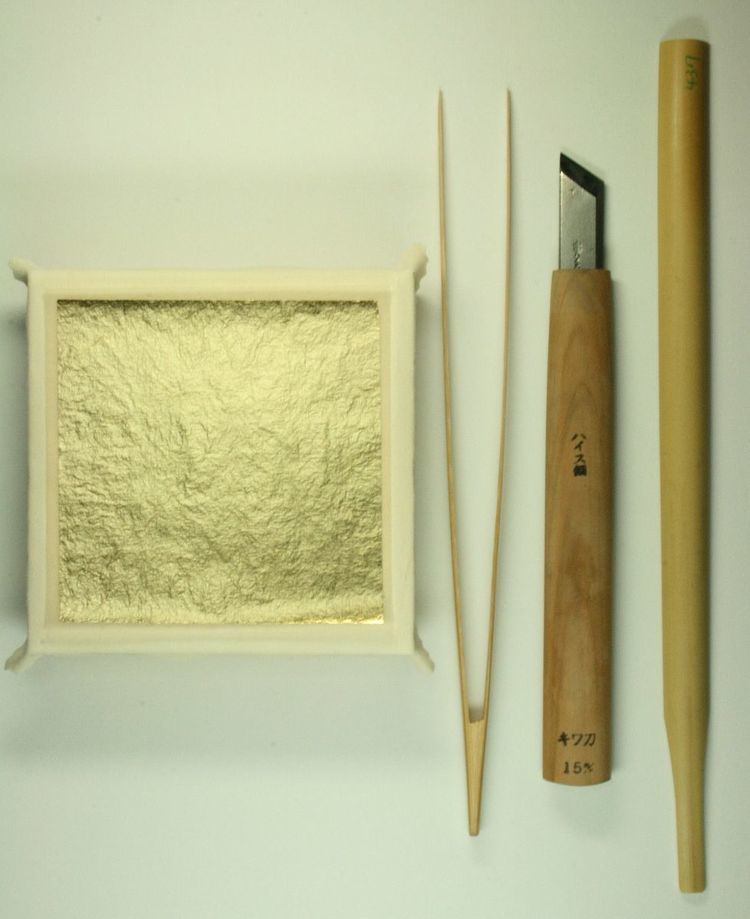 | ||
Kirikane (截金) is a decorative technique used for Buddhist statues and paintings, using gold leaf, silver leaf, platinum leaf cut into lines, diamonds and triangles.
Contents
History
Kirikane was imported from China during the Tang dynasty(618–907). The oldest examples is Tamamushino Zushi at Horyuji Temple. Kirikane flourished primarily in the 11th century and continued until the 13th or 14th century. After that, however, Kirikane almost disappeared, due to the overall decline of Buddhist art.
Technique
1) Two pieces of leaf (gold or silver, platinum) are heated over an ash-banked fire and bonded together. An additional bonding is then done to further strengthen the leaf and add thickness.
2) The bonded leaf is cut with bamboo knife on a deer-skin-covered table.
3) The bonded leaf is affixed with glue(seaweed glue, funori and hide glue, nikawa) to the object to be decorated.
